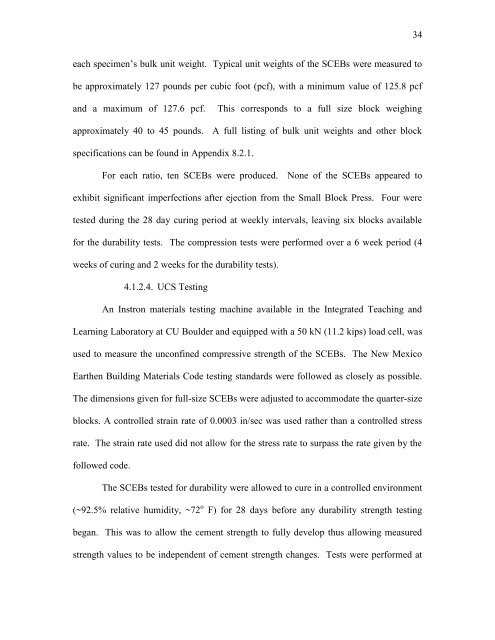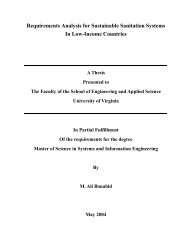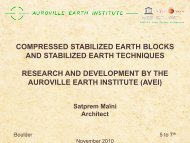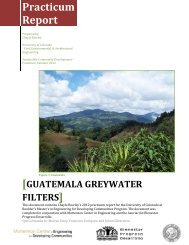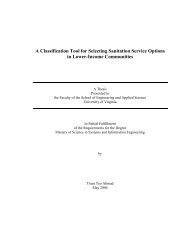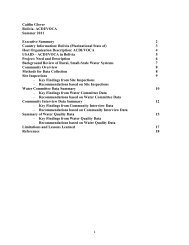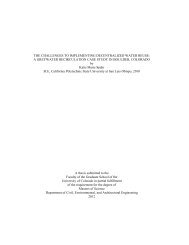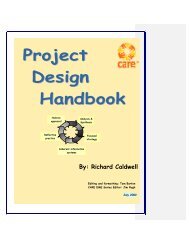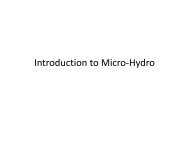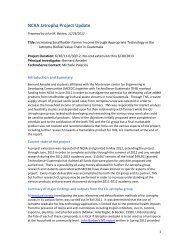SCEBs - University of Colorado Boulder
SCEBs - University of Colorado Boulder
SCEBs - University of Colorado Boulder
You also want an ePaper? Increase the reach of your titles
YUMPU automatically turns print PDFs into web optimized ePapers that Google loves.
each specimen‟s bulk unit weight. Typical unit weights <strong>of</strong> the <strong>SCEBs</strong> were measured to<br />
be approximately 127 pounds per cubic foot (pcf), with a minimum value <strong>of</strong> 125.8 pcf<br />
and a maximum <strong>of</strong> 127.6 pcf. This corresponds to a full size block weighing<br />
approximately 40 to 45 pounds. A full listing <strong>of</strong> bulk unit weights and other block<br />
specifications can be found in Appendix 8.2.1.<br />
For each ratio, ten <strong>SCEBs</strong> were produced. None <strong>of</strong> the <strong>SCEBs</strong> appeared to<br />
exhibit significant imperfections after ejection from the Small Block Press. Four were<br />
tested during the 28 day curing period at weekly intervals, leaving six blocks available<br />
for the durability tests. The compression tests were performed over a 6 week period (4<br />
weeks <strong>of</strong> curing and 2 weeks for the durability tests).<br />
4.1.2.4. UCS Testing<br />
An Instron materials testing machine available in the Integrated Teaching and<br />
Learning Laboratory at CU <strong>Boulder</strong> and equipped with a 50 kN (11.2 kips) load cell, was<br />
used to measure the unconfined compressive strength <strong>of</strong> the <strong>SCEBs</strong>. The New Mexico<br />
Earthen Building Materials Code testing standards were followed as closely as possible.<br />
The dimensions given for full-size <strong>SCEBs</strong> were adjusted to accommodate the quarter-size<br />
blocks. A controlled strain rate <strong>of</strong> 0.0003 in/sec was used rather than a controlled stress<br />
rate. The strain rate used did not allow for the stress rate to surpass the rate given by the<br />
followed code.<br />
The <strong>SCEBs</strong> tested for durability were allowed to cure in a controlled environment<br />
(~92.5% relative humidity, ~72 o F) for 28 days before any durability strength testing<br />
began. This was to allow the cement strength to fully develop thus allowing measured<br />
strength values to be independent <strong>of</strong> cement strength changes. Tests were performed at<br />
34


